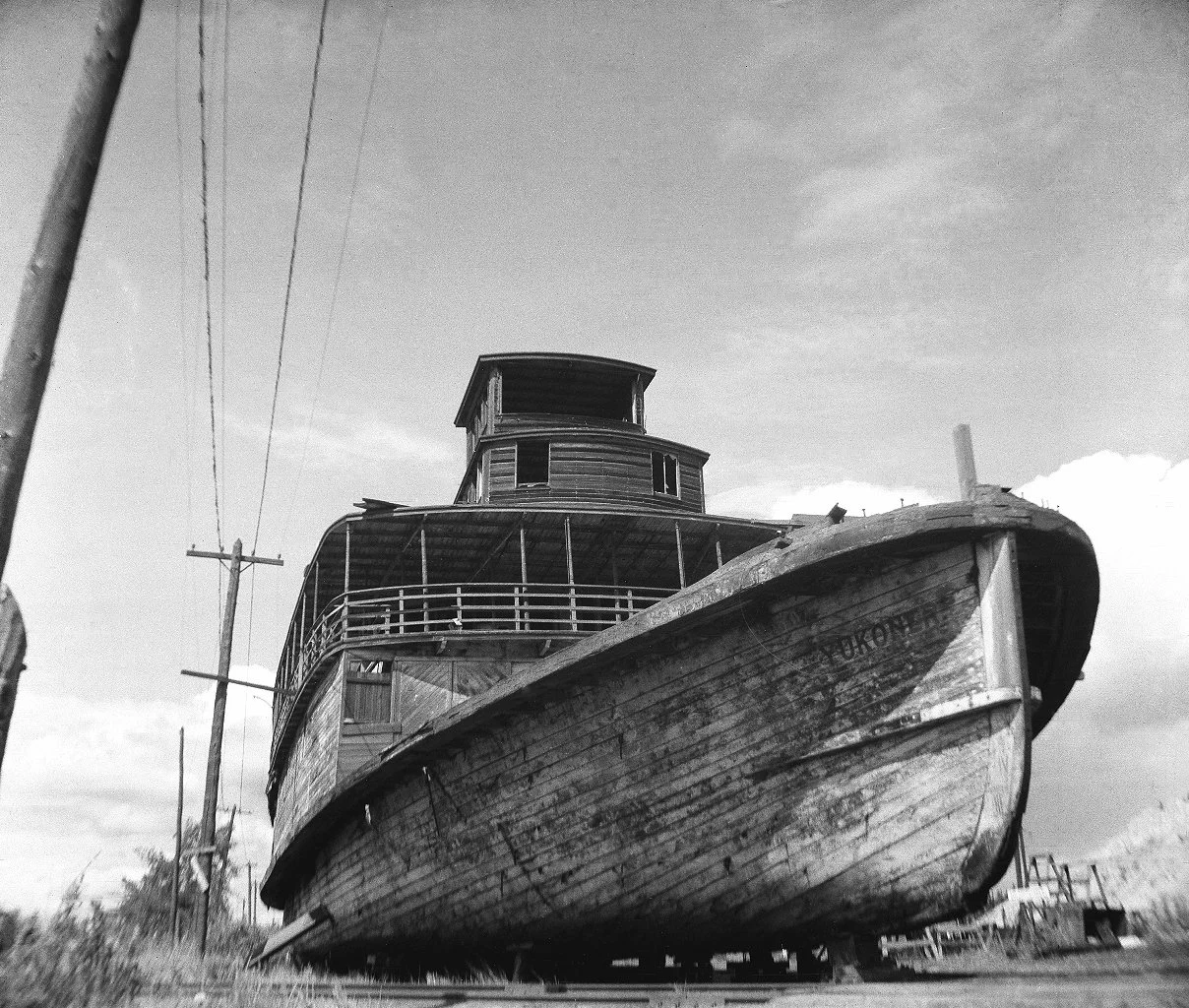POST WAR YEARS
Photo Squadron 13, renamed Squadron 7, completed it’s work for the Alcan Highway, and went on to photo-survey other northern locations for several years after the war. But in 1946, Stan was seconded from the RCAF by the National Film Board to shoot Photo Canada, a documentary about the RCAF’s role in completing the map of Canada. He must have been excited to land this job, his first as a cinematographer, and while filming, to visit and take footage of his own squadron, still hard at work.
I have my own copy of this film, and love the vintage feel of it, complete with red plasticine titles floating over a majestic black and white mountain range. Stan’s credit for the film read, “Photography by: Sgt SF Brede #7 Photographic Wing RCAF”. This would have been his first on-screen film credit.
The Internet helped me piece together Stan’s RCAF career, but it was old technology that sparked my interest in this particular film. A small wooden box contains an envelope stuffed with negatives — stills he took while on location with Photo Canada — tucked into tiny folders cut from old navigation maps. I can see Stan wandering around in his free time, taking in and capturing the breathtaking surroundings he found himself in. The negatives have been scanned, and you can see a few of the nicest images.
Based on the riverboat shots, these photos are likely from Whitehorse, but the town shots could also be Yellowknife. Both were in the midst of rapid growth as the North opened up, and both were visited by the Photo Canada film crew.
Credit: Stanley Brede, 1946
The building boom that was going on around the Alcan Highway project would certainly have included the construction of homes and places of business for the busy and rapidly growing city of Whitehorse.
That year, even as the people of Whitehorse were being moved rapidly into the future, it would have been impossible for citizens and visitors in the prosperous city to forget about its colourful, iconic past. Derelict sternwheelers, which had plied the Yukon River in the bustling gold rush days, still sat, fifty years later, in dry dock; though we can see that at least one of the steamboats was still in service. Stan, with his camera, would have been unable to resist the lure of these elegant old beauties.
Credit: Stanley Brede, 1946
Credit: Stanley Brede, 1946
Credit: Stanley Brede, 1946
Credit: Stanley Brede, 1946
In their day, both the Yukoner and the Bonanza King had been important in the daily life of Whitehorse and Dawson City. Michael Gates, columnist with Yukon News tells a great story about just how important they were: *History Hunter: The time that Dawson City died – for a day; Aug 1, 2019; Yukon News
Credit: Stanley Brede, 1946
Maybe these cabins were built as lodging for the influx of workers brought in to work on the highway project. They also seem a likely place to have housed a film crew making a documentary.
I found a lot of nice “people” shots in the envelope; below is just one of my favourites.
Credit: Stanley Brede, 1946
There is no doubt that Stan’s time spent up north from 1944-46 began for him a great love of the wilderness, and the people inhabiting it. His appreciation for northern life deepened over the next two decades, as he would often spend weeks at a time shooting in remote locations.
I’m not sure when Stan left the RCAF, but in 1947 and ‘48, he worked on two more National Film Board films; Prairie Homes, and Holiday Island. The NFB had hired Crawley Films as their production company for the latter, directed by Judith Crawley. It was the first time, as far as I know, that the name Stanley Brede appeared in the credits of a Crawley film.
Stan was juggling jobs during this time, trying to find his way to a good career with a steady income. He was not alone. After the war, Veterans Affairs had given vets help, in the form of VAC grants, to start over in business, schooling or farming. Stan tried his hand at running a portrait studio for a time. I have portrait negatives and a scrap of business stationery bearing Dad’s name and that of another gentleman. I wonder if a VAC grant got them set up with a shared studio and darkroom.
Though I don’t have much other evidence of this business venture, I do know that, in this time period, well-known Canadian artist Arthur (Art) Price hired my father to photograph some of his work. Unable to pay for his services in cash, Price offered instead a handsome carved tray. I don’t know how Dad felt about this arrangement at the time, but the tray was definitely a treasured possession in our home, all my young life. It’s now safe with another family member, passed down over time, still cherished. Art Price went on to be a very prolific, successful and acclaimed artist; a Canadian treasure in his own right.
Carving by Arthur Price Photo credit: Stanley Brede









